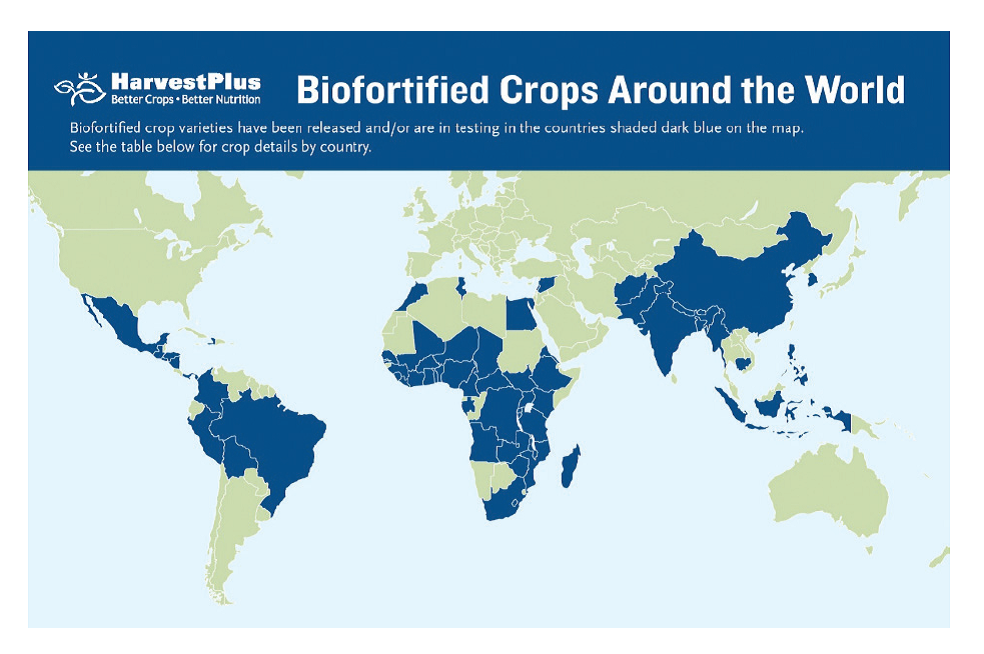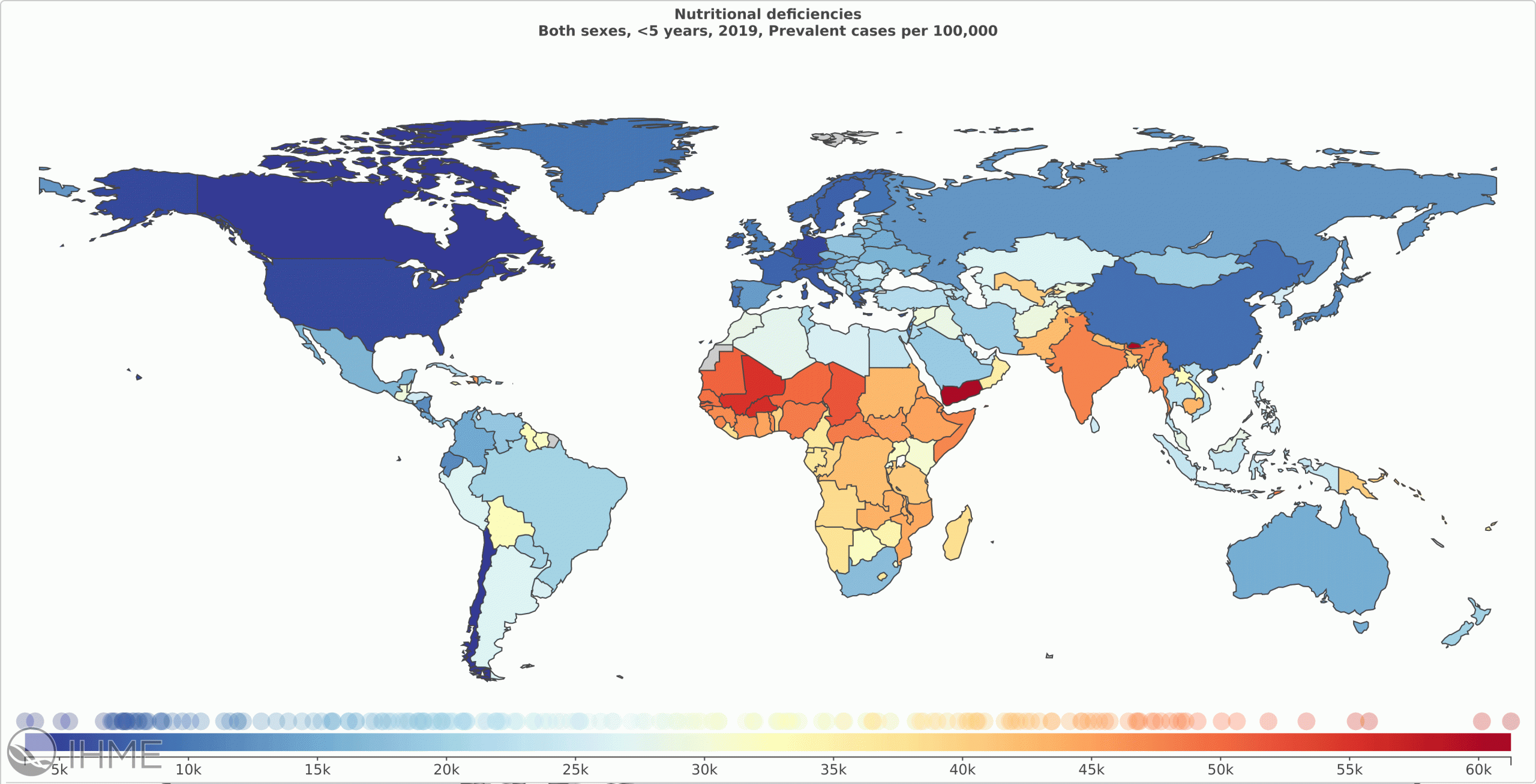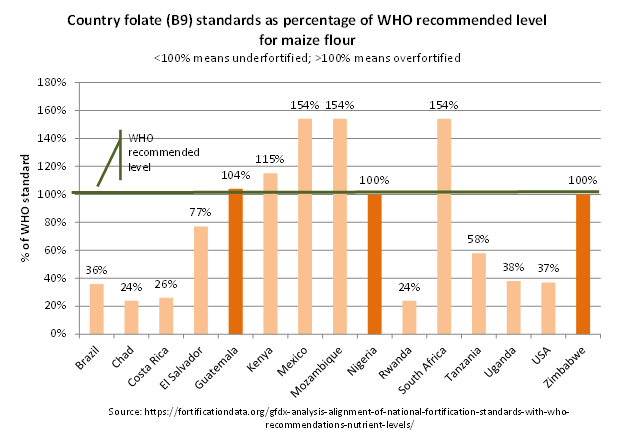Approximately two billion people worldwide, at least one quarter of the world’s population, suffer from the “hidden hunger” of micronutrient deficiency. [1]
Micronutrient deficiency
Micronutrients – vitamins and minerals such as Vitamin A, Vitamin B12, folic acid and iodine – enable the body to produce enzymes, hormones and other substances necessary for growth, brain development and immune function. Deficiencies occur when people do not have a varied diet that includes vegetables, fruits, meat and other nutrient-rich foods. Health issues such as anemia, spina bifida and low birth weight are caused by micronutrient deficiencies.
Reducing deficiencies
Several interventions are used to supply missing nutrients, including supplements given to target populations (such as folate for pregnant women) and biofortification, through which staple crops such as wheat, rice and beans are bred to increase their content of micronutrients such as zinc, iron and provitamin A carotenoid.
Large-scale food fortification (LSFF) is another cost-effective intervention in which micronutrients are added to widely-consumed foods and condiments such as flour, rice, salt and edible oil when the food is being processed and packaged for sale. LSFF enables the entire population in a country or region to benefit, such as from salt that has iodine added, milk that is fortified with Vitamin D and grains fortified with B vitamins and iron.
LSFF has the added benefit of addressing health issues proactively since it is an intervention via the food system, which then saves health systems money due to prevention of diseases and conditions caused by micronutrient deficiencies.
Economic return on investment
An analysis of folic acid, iodine and iron fortification showed that for every $1 spent, there is a $27 return on investment due to avoided treatment costs, improved cognition and increased earnings and improved work productivity.[2]
Low- and middle-income countries (LMICs) need to increase their use of fortification strategies, creating an environment where food fortification is possible, economically feasible and results in fortified food being widely available to consumers.
[1] United Nations (UN) Food and Agriculture Organization (FAO). 2021. The State of Food Security and Nutrition in the World.
[2] Garrett G, Matthias D, et al. 2019. Doubling down on food fortification to fortify the future. Bill and Melinda Gates Foundation (BMGF).




